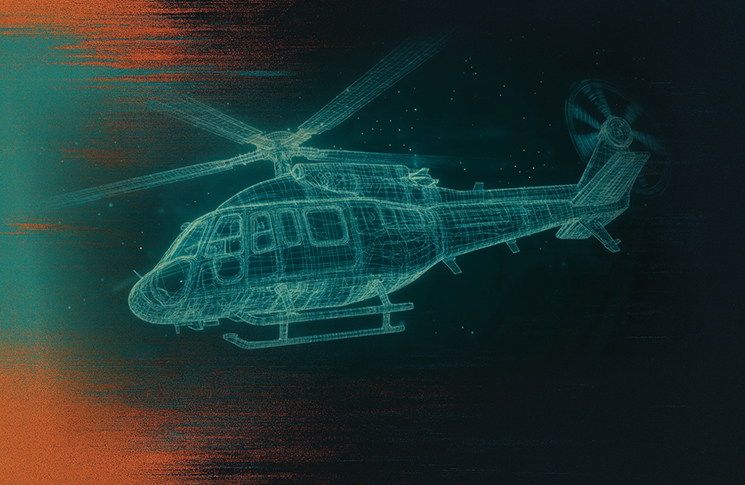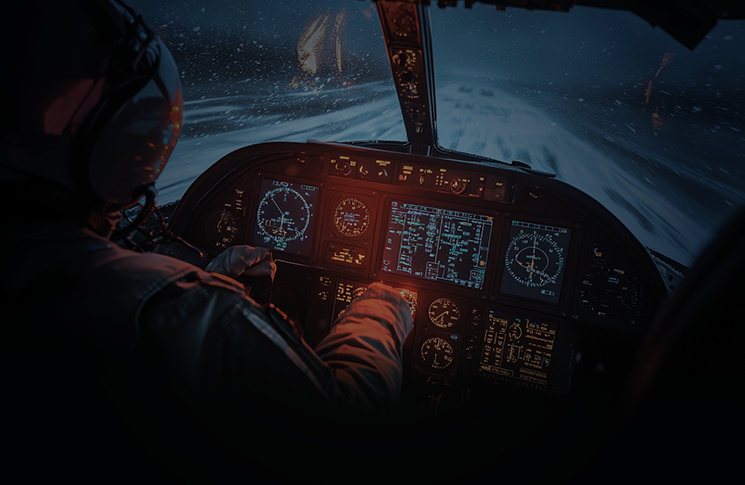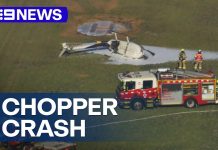The terrifying ordeal of an AW139 pilot highlights the complexity of modern helicopter control systems and the deep understanding needed for pilots to operate them safely.
Many instrument or night checks often involve the same unusual attitudes. You close your eyes and look down in your lap while the testing office gently manoeuvres the helicopter into 10-degree nose down, with a 20-degree angle of bank and 20 knots lower speed.
You are expecting it, and you use normal rates and amounts of flight control inputs to bring the helicopter back to where it should be. You may also hand fly an instrument approach, utilising altitude hold and the stability augmentation system (SAS) only – no upper modes.
In your general emergency check, you will probably practise a single-engine control emergency, such as a full authority digital engine control failure. These are all readily able to be handled individually on their own.
Have you ever combined all 3 of these, to the extreme? Why don’t we set a 140-degree angle of bank, degrade the autopilot completely and then give you both engines in manual mode, at idle. An unrealistic scenario? Not for the incident that follows!
Saturation point
A single pilot was flying an AgustaWestland AW139 helicopter on a ferry flight across the Spanish countryside. The helicopter progressively climbed, making full use of the autopilot. Airspeed hold, altitude hold and navigation tracking were all engaged – the 4 axes all coupled. The helicopter came into turbulence, with downdrafts of approximately 700 fpm. At first the autopilot was managing to handle this; however, the actuators became saturated and there were some pitch excursions – the pitch attitude varied between +10-degree nose up and -7-degree nose down.
The pilot at this stage intervened. He put his hands and feet on the controls and pushed and held in the force trim release (FTR) button. By pressing this button to remove the altitude hold function, the helicopter would have become less stable and harder to fly.
The initial inputs by the pilot of back cyclic and pedal indicate that an attempt was made to slow down. However, the combination of a now unstable helicopter, along with poorly coordinated and large pilot inputs, resulted in an unusual attitude. And the attitude wasn’t just unusual, it was extreme – up to 140-degree angle of bank, +20 degree to -15 degree of pitch. This resulted in a rate of descent of 6,500 fpm.
During this time, the main rotor was overspeeding due to flare effect and airflow coming up through the rotor. The rotor rpm was reaching 115% and the engines reduced the fuel flow to try to contain the overspeed. The engine turbine speed exceeded 127% which triggered a setting where the electronic engine control (EEC) assumes the N2 rpm sensor has failed. This then puts the engine into manual mode. Given the EEC was already minimising the fuel flow, both engines were now at idle power, in manual mode.
And the attitude wasn’t just unusual, it was extreme – up to 140-degree angle of bank.
The pilot eventually recovered from the unusual attitude but now the low-rotor rpm horn was sounding. In the high workload and shock of the situation, the pilot incorrectly diagnosed a double-engine failure and conducted an autorotative landing. The helicopter landed upright with some damage and luckily the pilot walked away.
So what is to be learnt from this accident? Broadly, I think there are 2 areas.
This resulted in a rate of descent of 6,500 fpm.
Axis powers
First, what happens when a modern helicopter autopilot rapidly degrades to basic modes or even turns off completely? Second, how do modern engines behave in extreme unusual attitudes when the main rotor overspeeds?
Fortunately, these 2 are rare and separate but it is not inconceivable that they can end up occurring together.
The pilot had what looked like the autopilot operating in four-axis mode. The autopilot was handling the turbulence, but with pitch attitude excursions and some flight control saturation. The pilot wasn’t necessarily happy with this and intervened.
One way of intervening would have been to deselect the airspeed mode and operate in three-axis mode. Lowering the collective would allow the helicopter to slow down. The turbulence excursions could have been managed; the pitch changes and reduced speed would have allowed the autopilot more capacity to respond before the actuators saturated.
Instead, the pilot immediately decided to take most of the autopilot out of the equation by pushing the FTR button. This would have removed the control of speed, attitude and altitude. Modern helicopters at high collective settings and high speed rely on the autopilot basic modes to make the aircraft stable and flyable. Very few pilots fly a modern helicopter without the autopilot engaged and at its most basic level – SAS and altitude hold. Intervening during turbulence the way the pilot did, meant trying to fly an unstable divergent helicopter, with little time to get a feel for the aircraft. This would have exposed the pilot to a very high workload and it is no wonder the pilot entered an unusual attitude – and an extreme one at that.
The lesson here is that modern helicopter autopilots provide a critical function. If they degrade rapidly, by either intentional or inadvertent action, the pilot will experience high workloads in controlling the aircraft. Operating the helicopter fast and in turbulent conditions may require the pilot to be attentive, with their hands ghosting the controls and monitoring the attitude ready to intervene.
Modal madness
What about the second part of the accident where the engines went into manual mode at idle? This is a designed response for modern electronically controlled engines. As the main rotor overspeeds, the engines reduce power to try to control the rotor rpm reducing it back within limits.
If the overspeed is too great, the engines can’t do this quickly enough and the turbine ends up overspeeding as well. The engine will then decrease fuel flow back to idle to prevent a catastrophic engine failure, and to reduce rotor rpm. Eventually the engine may suspect other component failures and put the fuel control into manual mode.

This is the predicament the pilot seems to have found himself in. He thought there was a double engine failure after recovering from the unusual attitude. Helicopter checklists cover manual engine mode operations; however, in this case, the compound nature of the emergency, with extreme unusual attitude, degraded autopilot and time criticality would challenge most pilots to suddenly go for the manual throttles or switch the engines out of manual mode.
Recognition and avoidance
The first stage in avoiding these situations is to ensure your autopilot doesn’t degrade. If it is turbulent or you notice the autopilot struggling, slow down to give the autopilot more capacity and prevent it from saturating.
Select appropriate modes – removing the 4th axis and accepting some speed variations may make it easier for the autopilot. It might also now be time to become more attentive to what is going on. Put your hands near the controls, ready to take over. Monitor the aircraft attitude and take up a flying scan in case you need to take over. Hold the cyclic properly and be careful where you put your hands in the cockpit.
In the high workload and shock of the situation, the pilot incorrectly diagnosed a double-engine failure and conducted an autorotative landing.
Having your hands close to the controls and monitoring what is going on means that if you need to intervene, then it will not be as great a shock and you can use normal rates and amounts of flight control inputs before the attitude becomes too extreme. Don’t rest a note pad on the autopilot control panel.
Be careful around the autopilot cut-off switch on the cyclic – we don’t want an inadvertent loss of autopilot. Understand how your autopilot works and how it degrades when you push the FTR. Holding in the FTR doesn’t improve the stability of your helicopter.
If you do find yourself recovering from an extreme unusual attitude and the engines don’t seem to be producing enough power or you hear the low-rotor rpm horn, then depending on the aircraft you could be in manual mode with a low power setting. Pre-thinking this emergency will allow you to be prepared to manually move the engine throttles and/or deselect manual mode on the aircraft you fly.
It is no wonder the pilot entered an unusual attitude – and an extreme one at that.
This isn’t an emergency to practise in the real helicopter; only a simulator would be appropriate. The simulator may not be able to replicate such an extreme emergency so the actual hands and feet handling may not be exactly modelled; however, this is not the real point of practising the emergency. The simulation will allow you to see the sequence of events, warnings and audio alarms while practising bringing both engines out of manual mode at idle, to a state where they provide enough power to allow continued flight. 
Don’t let inattention or carelessness with your autopilot in the cruise give you more than just an unusual attitude, but also a few unordered emergency side dishes.





